Accidentally Deleted File From Heroku How to Push Again

When it comes to deploying an application, in that location are ordinarily two options: a VPS or a PaaS (platform equally a service). This commodity volition show you a recipe for deploying an awarding to production on a PaaS similar Heroku.
Step 1 - Create the project
The first footstep is to create a unproblematic structure for our project with some basic files. For this article, I'll create a demo server with NodeJS.
In a new folder I'll open up a terminal and run the control npm init -y in society to create a new project. The dummy server will be written in Express, so we need to run the npm install express command to install this module.
In one case this library is installed, we can create a new file for our project, named app.js. Inside information technology we'll write the code for our simple server:
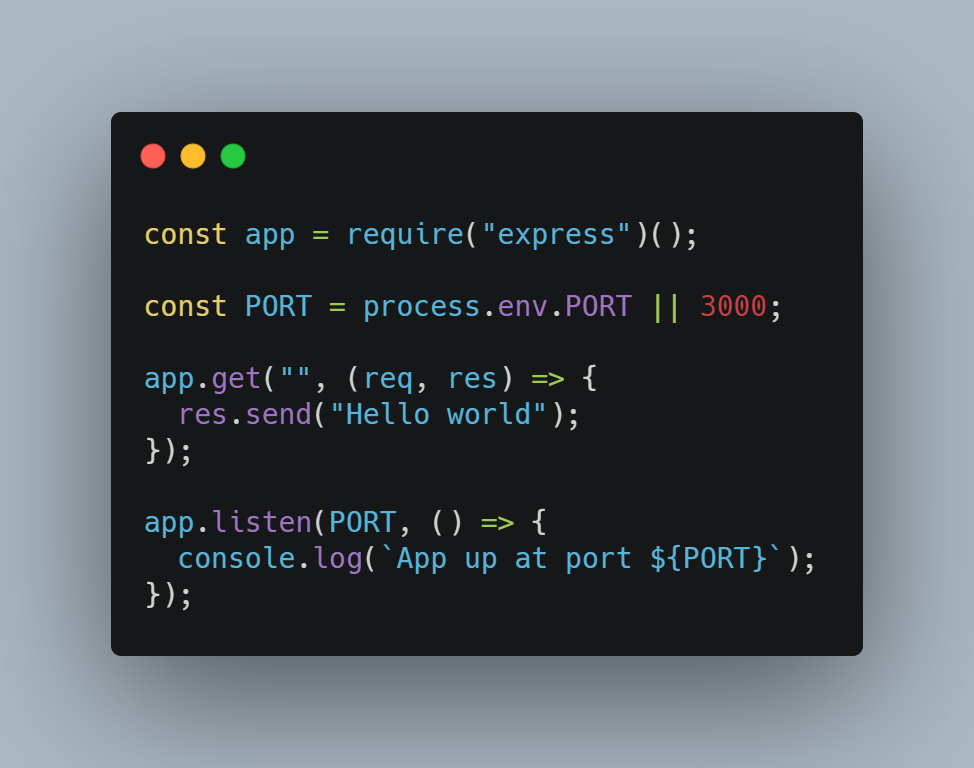
We can start the application by running node app.js. Then we tin can endeavour it out at the following URL http://localhost:3000. At this bespeak y'all should run into the message Hi World in the browser.

Step ii - Version control system
The next step is to choose a version command system and to place our code in a development platform in a repository.
The most pop version command system is Git forth with Github as a development platform, so that'southward what we'll employ hither.
On GitHub, go alee and create a new repository for your application, similar this:
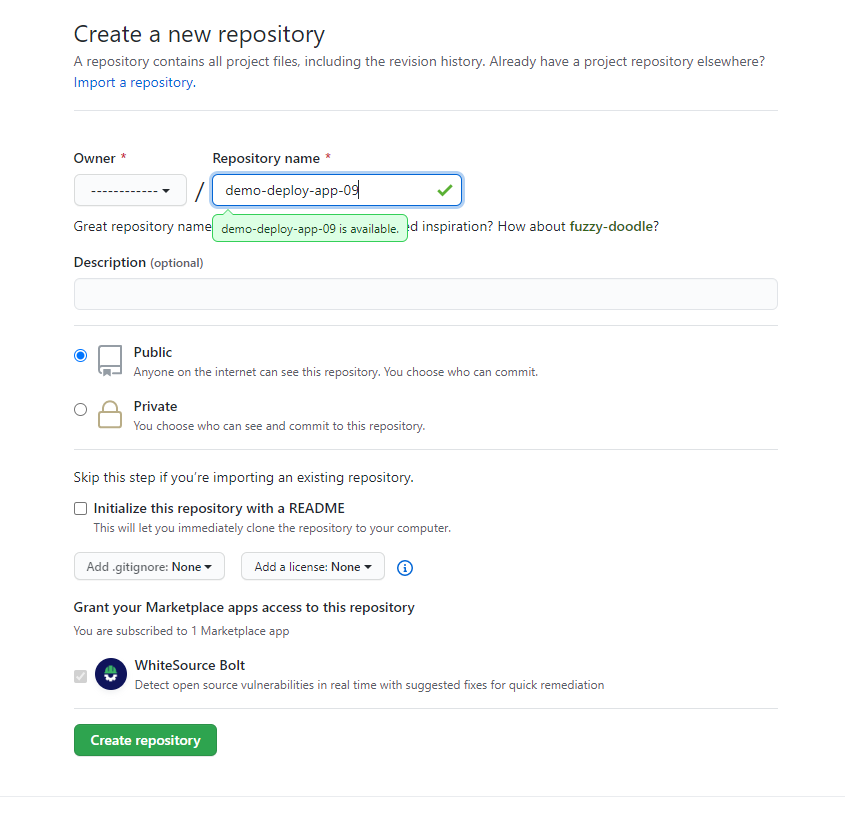
To upload your local code into a repository, you need to run the commands that are listed on Github afterward you click Create repository button:

! Before we do this, we must ignore some files. We desire to upload to the repository only the code that we write, without the dependencies (the installed modules).
For that, we need to create a new file .gitignore and inside it write the file that we want to ignore.
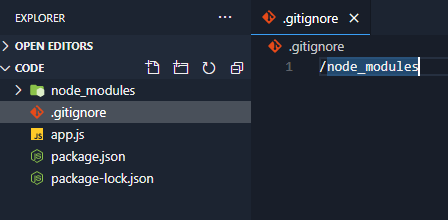
Now, we tin can write the commands listed in the picture in a higher place (the i from GitHub).
If you ran the commands correctly, then it'll exist on your repository'southward page. If you refresh information technology you should meet your files, except the 1 that you explicitly ignored, namely node_modules.

Pace 3 - Link the repository with Heroku
At this footstep, we can link the repository from Github to our Heroku application.
Commencement, create a new application on Heroku and follow the steps listed on the platform.

Once the application has been created, a window similar to this should appear:
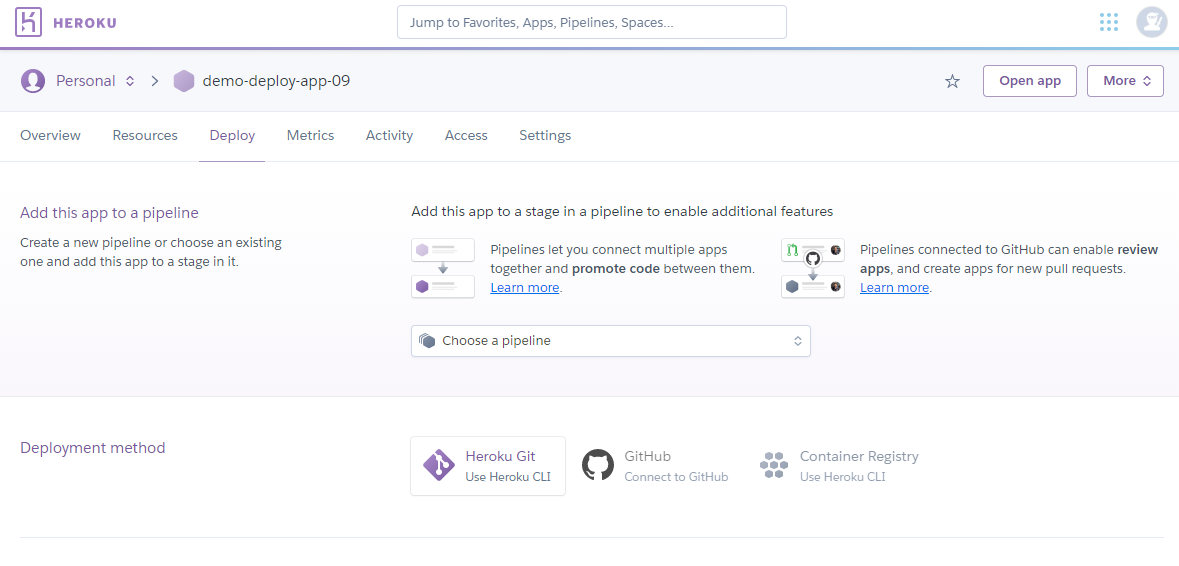
Now, if yous look at the navigation at the summit, you'll seeOverview, Resources, Deploy, Metrics and so on. Be certain that Deploy is selected. Then on the second row, click on the GitHub icon.
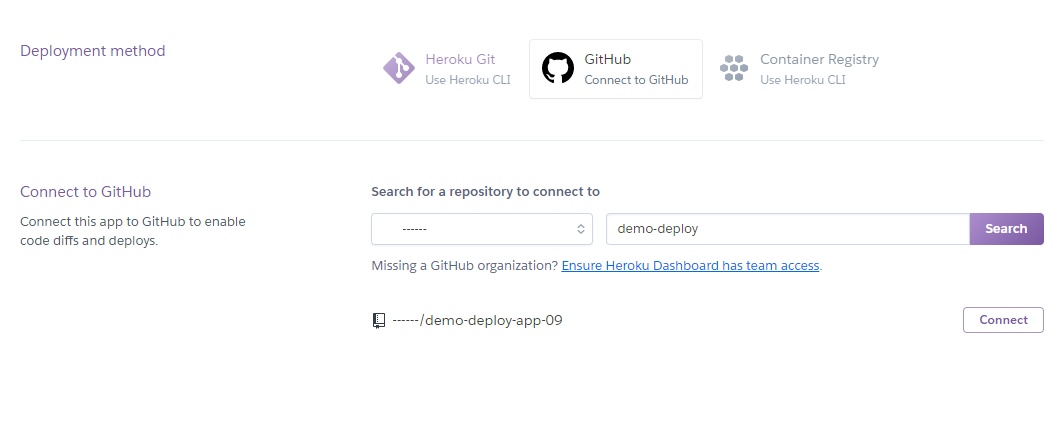
Search for the desired awarding, which is demo-deploy-app-09 in our case. Then click Connect.
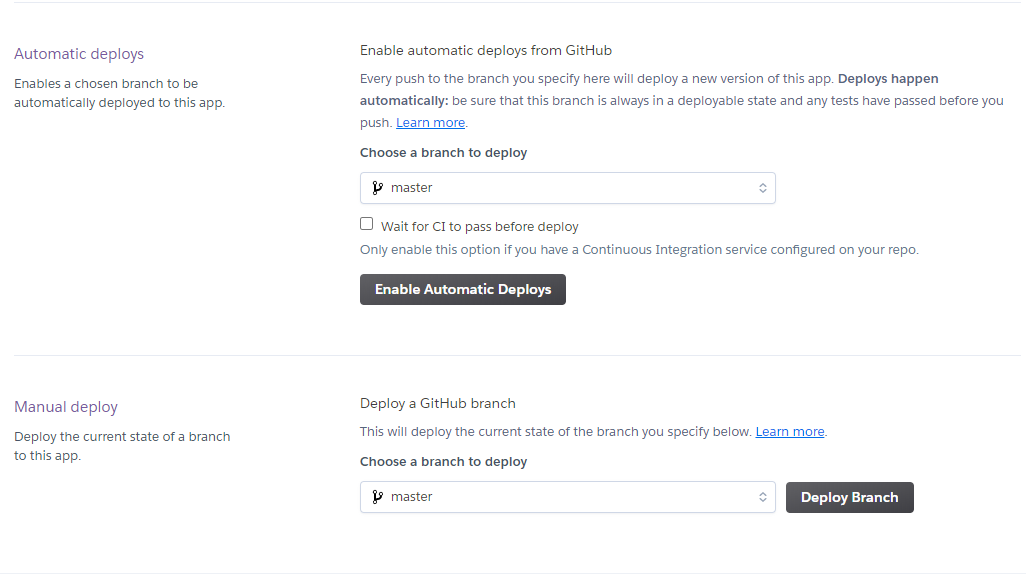
Once the awarding is successfully connected with your Heroku account, you tin click Deploy Branch to deploy your awarding.
If you want, you can also select the selection Enable Automatic Deploys which will automatically pull the code from your Github repository every fourth dimension you brand a push to that repository.
Once the application has been deployed, yous can click on View to open your awarding.
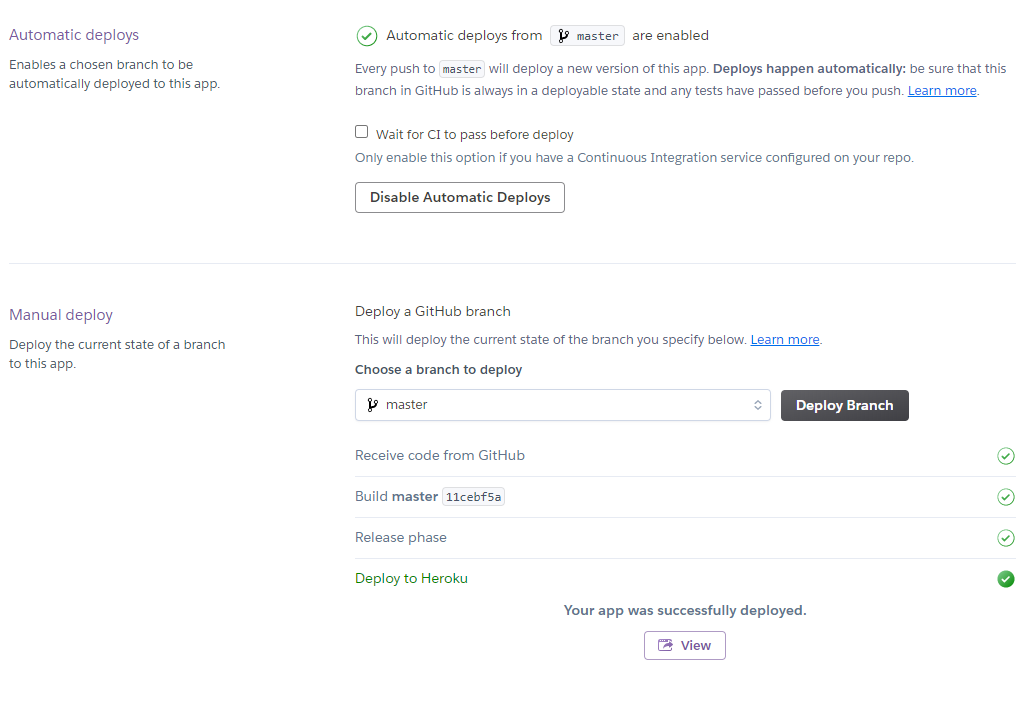
Step four - Configure Heroku to properly run the application
If you open the application at this point, you should see something like this:
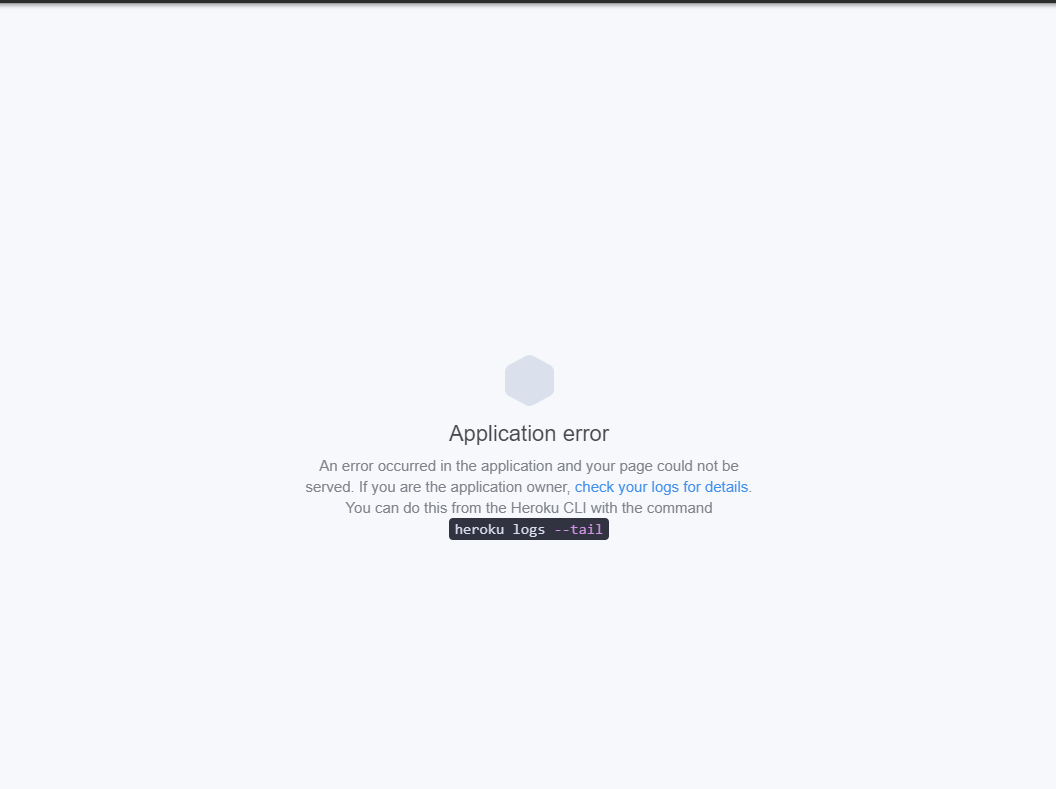
That's right, an error. That's because Heroku doesn't know how to start our awarding.
If you call back, we ran the command node app.js to start the application locally.
Heroku has no way of knowing what commands it needs to run to starting time the awarding, and that's why it threw an error.
To solve this problem, we must create a new file named Procfile with the following content: web: node ./app.js.
To update our application, all we need to do is push a new commit to GitHub. If nosotros have enabled the Automatic Deploys option, then the code will be automatically pulled to Heroku. Otherwise we need to click on Deploy Branch again.
One time the application is rebuilt, we should meet information technology working like so:
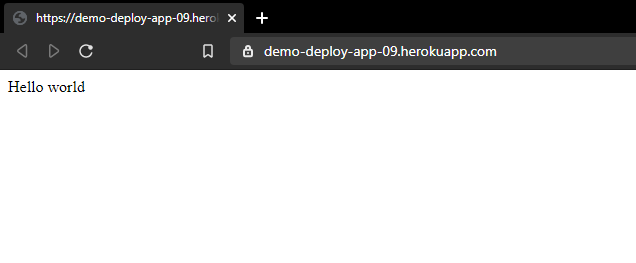
Step v - How to add together an add-on
1 key benefit that Heroku provides is the fact that you tin easily add resources in the form of add-ons to your project. These external resource come in the form of databases, logging & monitoring tools, CI and CD tools, or testing tools.
And then at present let'due south see how to add a new resources to your project. Start, we'll get to Resources, and from at that place we'll add a new tool for testing.
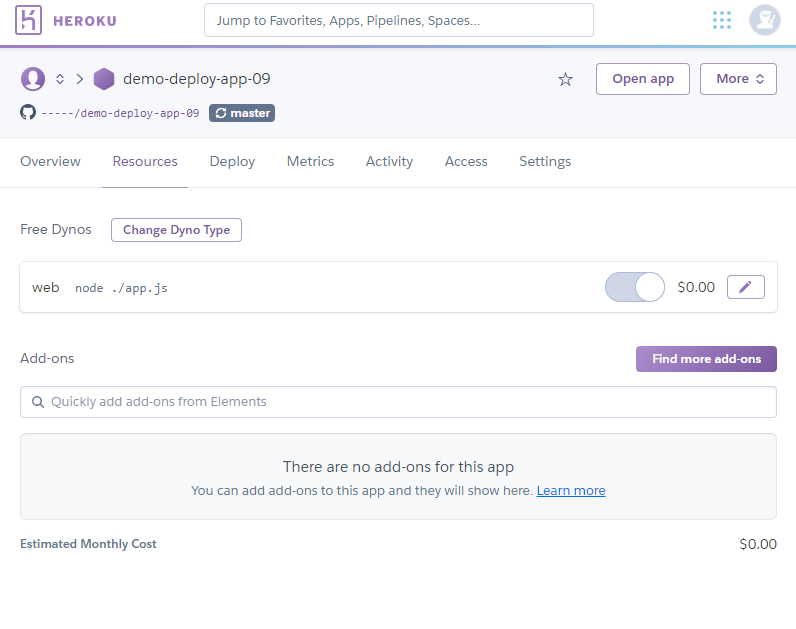
Get ahead and click on Detect more add-ons and so search for Loadmill.
Loadmill is a testing tool which is really swell for regression testing and load testing.
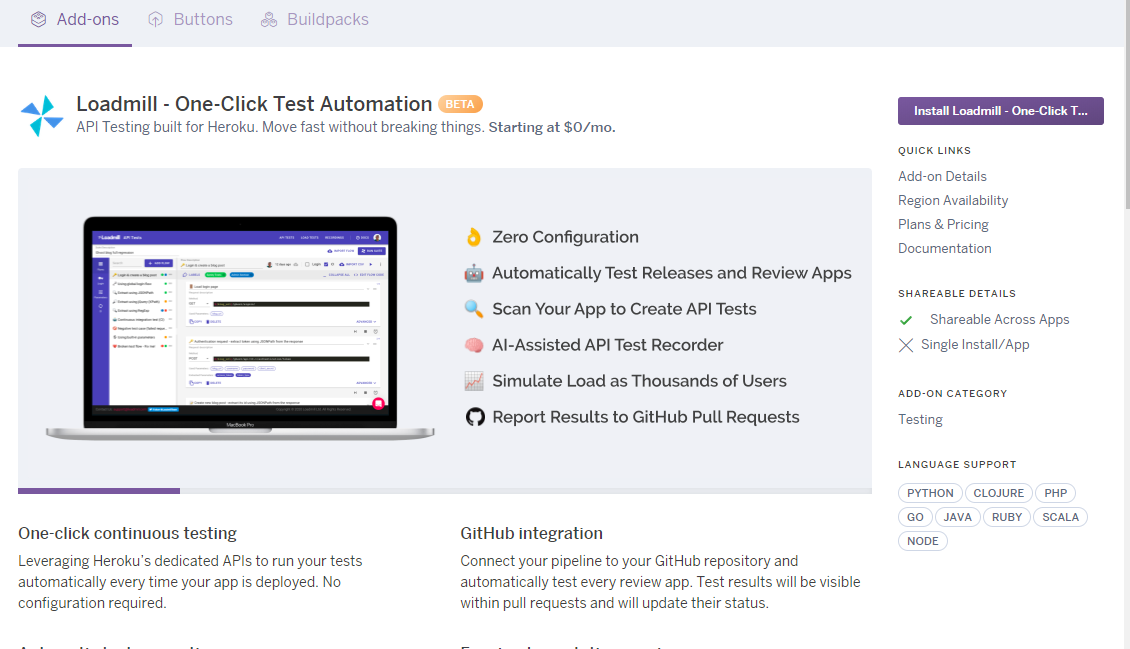
Go ahead and click on Install…. Then choose the awarding you want to link.
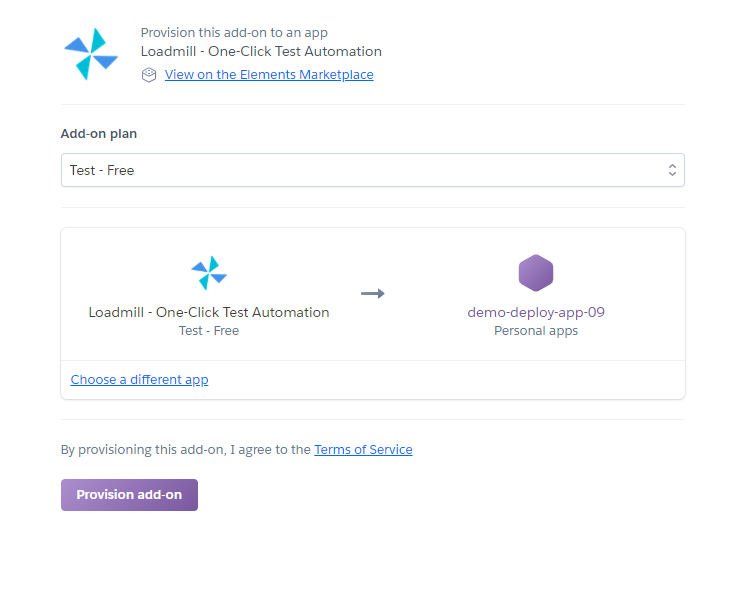
At this pace, Heroku will automatically create a new account for you on the provisioned platform.
On the resources tab, you tin run across the newly added resource:
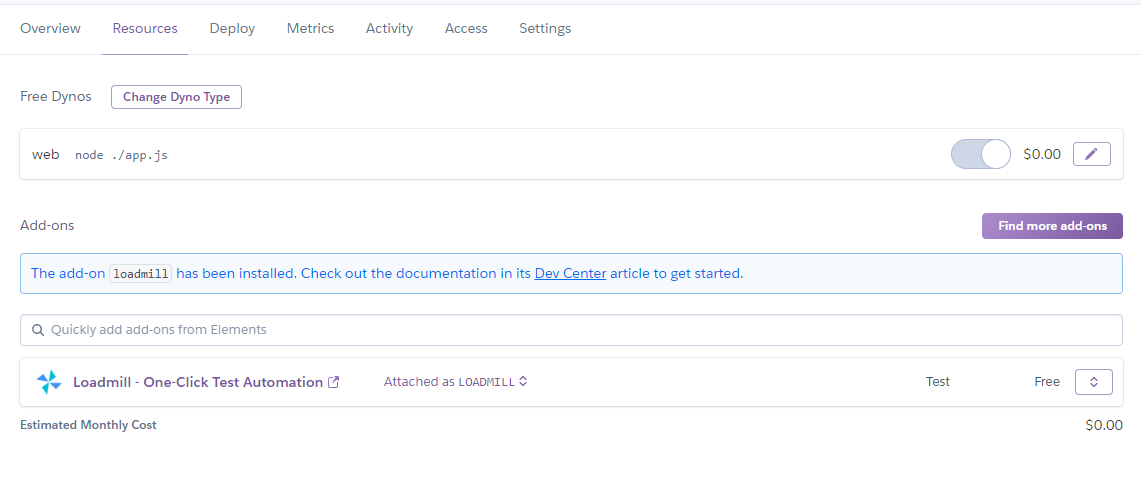
If you go ahead and access this add-on, you should see its dashboard with an intro tutorial and a demo exam created for y'all.
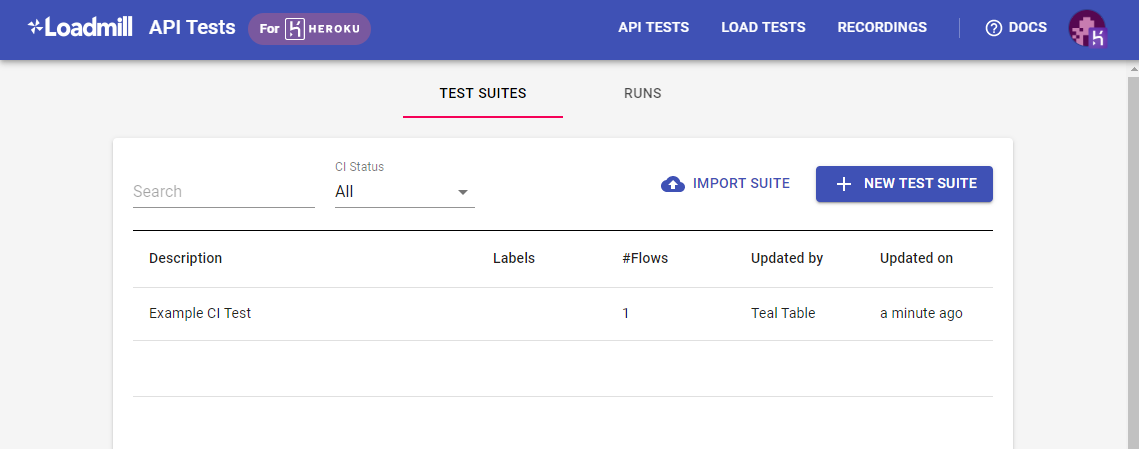
Conclusion
Heroku allows developers to quickly and almost painlessly deploy an awarding on a spider web server.
Information technology also provides a lot of plugins that you can integrate into your application.
A PaaS solution will ever allow you to move faster than the solution with a VPS where yous take to configure everything from the basis up.
Learn to code for costless. freeCodeCamp's open source curriculum has helped more than than forty,000 people get jobs every bit developers. Get started
Source: https://www.freecodecamp.org/news/how-to-deploy-an-application-to-heroku/
Enregistrer un commentaire for "Accidentally Deleted File From Heroku How to Push Again"